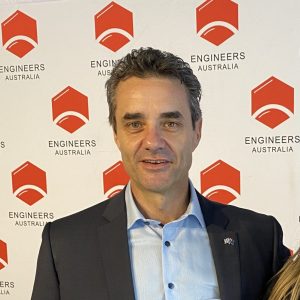Space impacts all aspects of life, but while other countries have powered ahead in space engineering capability and investment, Australia has lagged behind, according to a new Engineers Australia policy advice paper.
A new report, launched by the Engineers Australia National Committee for Space Engineering (NCSpE) and developed through Engineers Australia’s member-delivered policy and advocacy process, outlines ways for Australia to grow and sustain its space engineering capability and competency.
It frames this competency as an essential step towards a healthy workforce and high productivity.
Take for instance the behemoths of aerospace engineering such as the United States, Canada, Germany, Japan and India. Each of these countries places a value on space engineering that Australia should envy, according to NCSpE Chair Professor Peter Moar FIEAust.

“The countries that are best at sustaining a thriving space sector and putting assets into space – and at setting up the complex infrastructure on earth to interface with that space-based infrastructure – realise that strategically supporting key sectors enables nations to generate high-value tech jobs of the highest productivity,” Moar told create.
“Australian governments must prioritise the funding required to ensure that our nation is able to build a competent sovereign space sector.”
“Increasing our level of investment through the Australian Space Agency, and supporting the release of gradually more complex capacity- and capability- building sovereign space missions, would have both short- and long-term benefits for Australia.”
Jobs, jobs, jobs
Moar, who is also Head of Space Instrumentation Engineering Group at Swinburne University, suggested that the government should support a continuous and undisrupted pipeline of space engineering talent.
“The space sector is an industry in which a high number of value-adding tech jobs can be sustained, which will underpin the long-term national prosperity of the nation. Qualified practising space engineers are critical.”
There is huge potential also for cross-industry collaboration, given that a mission to and presence in space encompasses engineering disciplines including aerospace, avionics, electronics and robotics.
And the creation of one new role in the workforce has a knock-on effect.
“For every high value a tech job that is generated, another four to five jobs in the local economy are created,” Moar explained. “Australia tends to focus on generating service sector jobs, and that’s why our productivity is so low.”
Earthbound solutions
Modern space exploration brings to mind a more noble era of stargazing and lofty ambitions for humanity – but that’s not to say the industry doesn’t have a practical and important impact back at home.
“Who doesn’t love space?” Moar said. “Nothing is more inspiring. I personally believe the technical challenges involved in getting instrumentation into space constitute one of the highest form of engineering – certainly the most exciting and challenging.
“But also, imagery from space is critical for assessing and resolving issues relating to natural disasters and climate change. This can help us assess water quality in the Great Barrier Reef, for example, or to detect bushfires before anyone else.
“By taking imagery of the earth’s surface, engineers are able to better detect the point sources of methane in the atmosphere – setting us up to solve the problem.”
Summary of recommendations
The NCSpE is calling on both the Australian government and state and territory jurisdictions to urgently address the following key recommendations.
Develop a structured plan to build the necessary human and physical resources that form the space capability and capacity supply pyramid.
Support the release of gradually more complex capacity and capability building sovereign space missions.
Mandate existing international space engineering standards in all government space asset procurements.
Subsidise some or all of the costs of space simulation testing for the coming decade.
Challenge the SmartSatCRC with nationally beneficial priorities in industry, agriculture, environment and climate management.
Support government agencies to become informed customers for space procurements, including by calling upon established and experienced space companies to assist agencies with procurement specification and management.
Support Australian space sector researchers, SMEs and start-ups with access to business ‘angels’ with space experience and expertise.
Adjust research translation and commercialisation funding support to be more applicable to the development of space-based technologies and experimental missions.
Establish a national training institute for space.
Drive diversity and inclusion in the emerging space workforce.